| Photojournal
- 8 October 2006
Waiting
for the White-throated
|
I had gotten back from
my trip to Hope and Manning Park on Saturday night, and I hadn't
planned on going out on Sunday to take photos. However, when I
checked the web, I found a short report from a fellow named Brian,
who had, amongst other things, seen a White-throated Sparrow near
a stone bridge in Stanley Park. I'd met Brian once or twice in
the field before, and he's a very reliable fellow.
I'd never seen a White-throated
Sparrow before, and I have a bit of a soft spot for sparrows,
so I didn't want to pass this opportunity up. The weather was
good, and I was afraid that the bird might just go on migrating
instead of hanging around in Vancouver for a while. This made
me think it was imperative to get out to see the bird on Sunday
rather than relaxing and then going out on Monday or later.
I headed in towards
the city on Route 1 from Burnaby, and rather than fight the city
traffic, I took the Second Narrows and the Lions Gate to get to
the park; this worked out well.
Arriving, I stopped
near Second Beach and headed towards the only stone bridge that
I knew about, which is the one on a little stream that goes from
Lost Lagoon towards the beach. On the near side of the bridge
(the north), I found no sparrows, but once I crossed over, I found
a little area that was swarming with them: a place with stone
cobbles between the stone bridge and a wooden bridge.
It was a shady area,
and it took my eyes a little while to adjust from having been
out in the bright sunlight. I set the ISO on my camera up, and
I ended up with a lot of photos that look a lot brighter than
it actually was.
As I started scanning
the sparrows in front of me, I first noticed that most of them
were Dark-eyed Juncos, like this fellow.
|
|
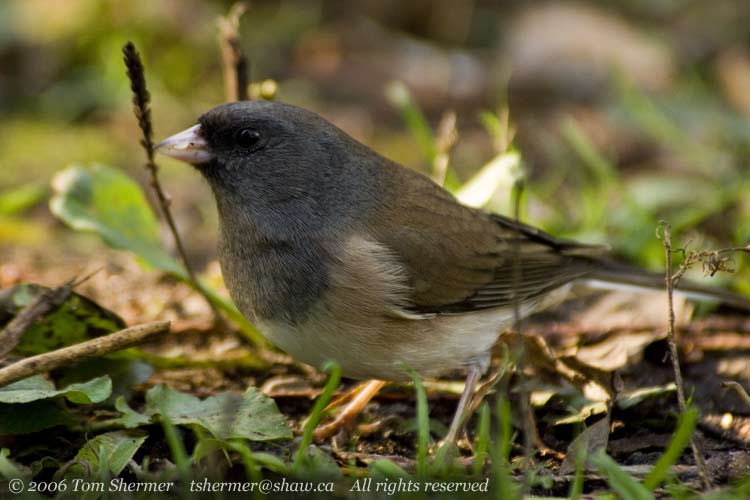 |
|
I shortened my tripod
and took up a seat on the ground, both to take it easy on my back
and to get low-angle photos.
I continued to look
through the sparrows, who were in the dark, hopping and flitting
around quite a bit, and scaring up into the bushes every time
someone came near...and it was a busy day in the park. All this
made it pretty hard to know which of the birds on the ground I
had looked at already and which ones I hadn't, so I just continually
scanned through the whole group.
The second most common
fellows seemed to be Song Sparrows.
|
|
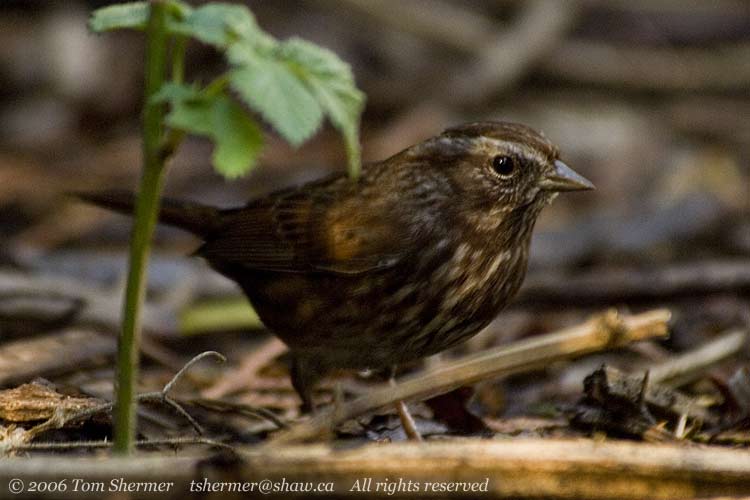 |
| But a close
third would be the Fox Sparrows. |
|
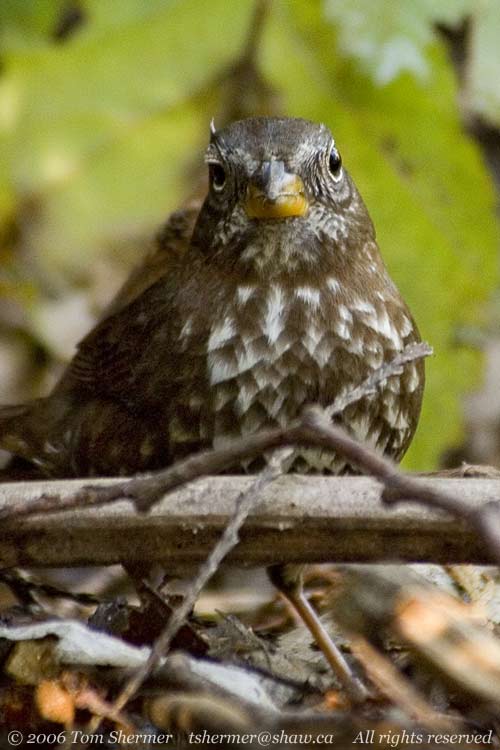 |
| Under and
around the edges of the bushes, some Spotted Towhees were scratching
and poking around. |
|
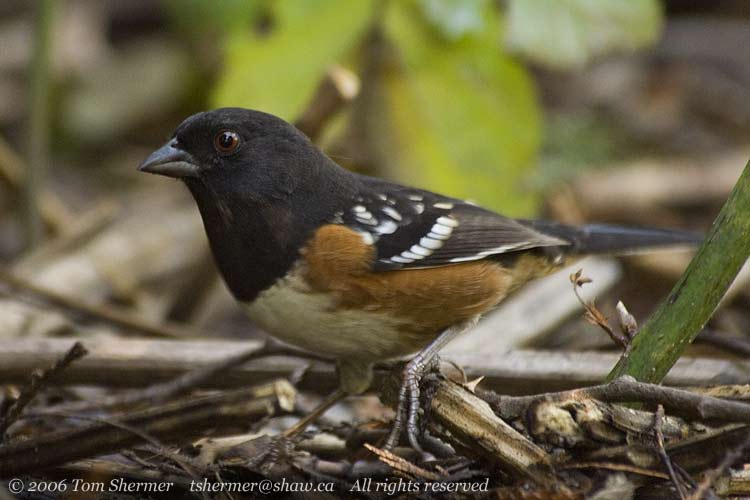 |
| The sparrows
were having enough of a shindig that even this big guy stopped by
to see what the commotion was all about. Maybe he thought that if
he hid his body, the others would think that he's a sparrow, too. |
|
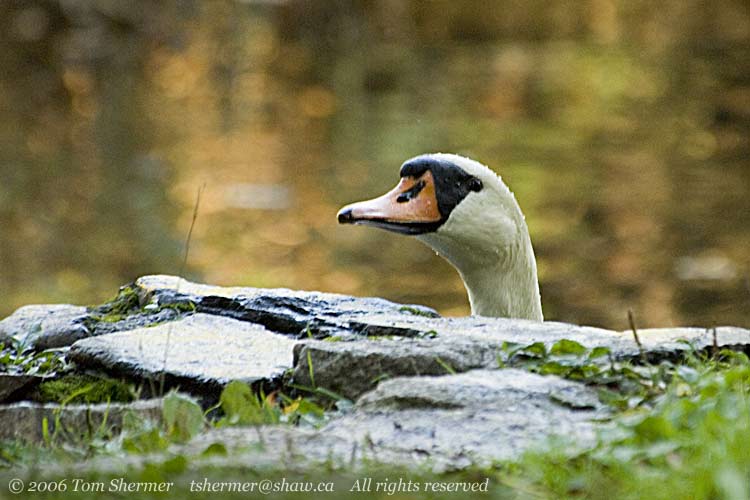 |
|
He's not, though, he's
a Mute Swan.
Sparrow
is a general term that we use for birds in the families Emberizidae
and Passeridae. Most North-American sparrows are in
Emberizidae, and within Emberizidae there is a genus known as
Zonotrichia. Zonotrichia includes my sought-after
White-throated Sparrow, and also the locally-common White-crowned
and Yellow-crowned Sparrows. Zonotrichia sparrows are fairly
distinctive, with plump breasts, long tails, and a barred wing
pattern.
Well, I had been looking
through lots of sparrows and hadn't seen any Zonotrichia,
not even the locals. I was thinking that this was not boding
well for me.
About the time I was
thinking this, this fellow came out of the shadows and trundled
by.
|
|
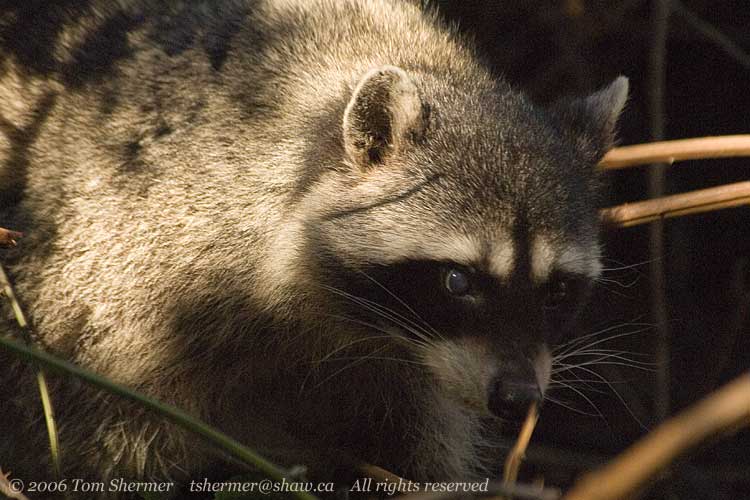 |
| He was an
odd character: he missing most of his tail, he didn't shy away from
me, and he seemed to be having some sort of problem with one of
his contact lenses. |
|
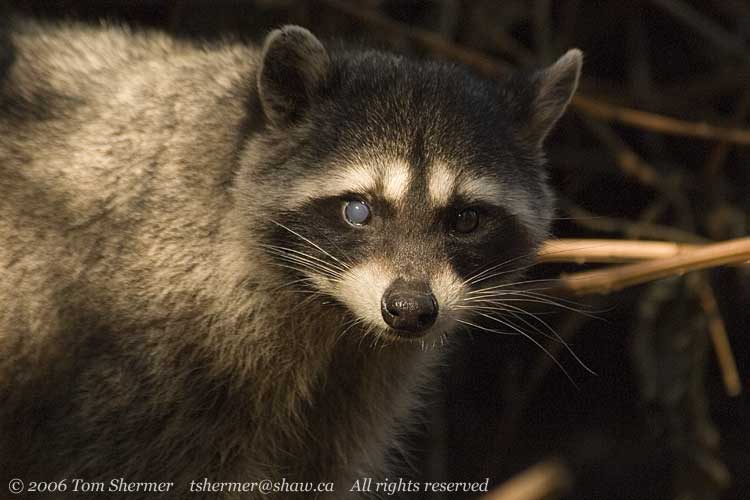 |
| The raccoon's
appearance caused the sparrows to flee, but after a minute or two
they came back. Then I finally noticed a Zonotrichia sparrow,
but it turned out to be a Golden-crowned. |
|
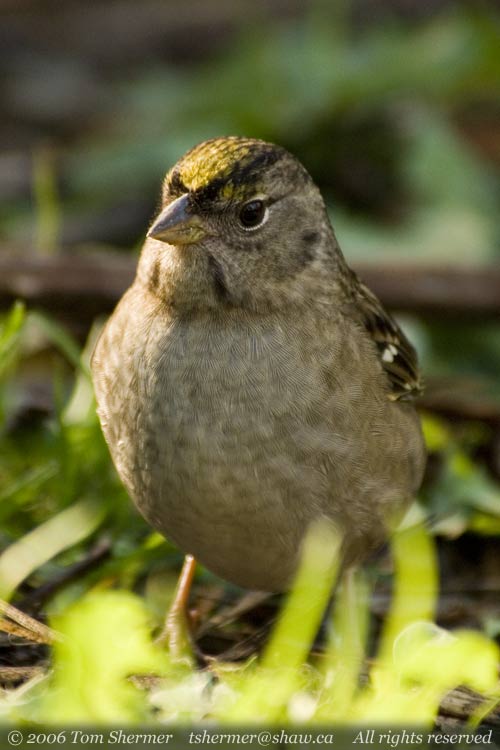 |
| Actually,
scanning the sparrows for the White-throated turned out to be fairly
easy, precisely because there weren't many Zonotrichia. All
the other sparrows, which look pretty different, were easily to
eliminate from consideration. Eventually, a young White-crowned
showed up. |
|
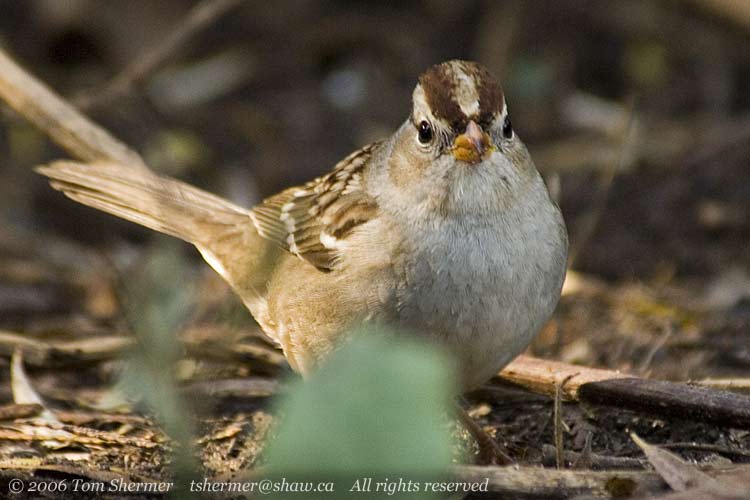 |
| In his report,
Brian had given advice to be patient if seeking this bird, and so
I waited, scanning the foraging birds. About a half an hour after
I had sat down, I saw a Zonotrichian hop out from under a bush,
and instantly knew I'd found my lifer White-throated Sparrow. I
had the bird in my sights as he flitted around for about three or
four minutes before he flew off and I lost him. |
|
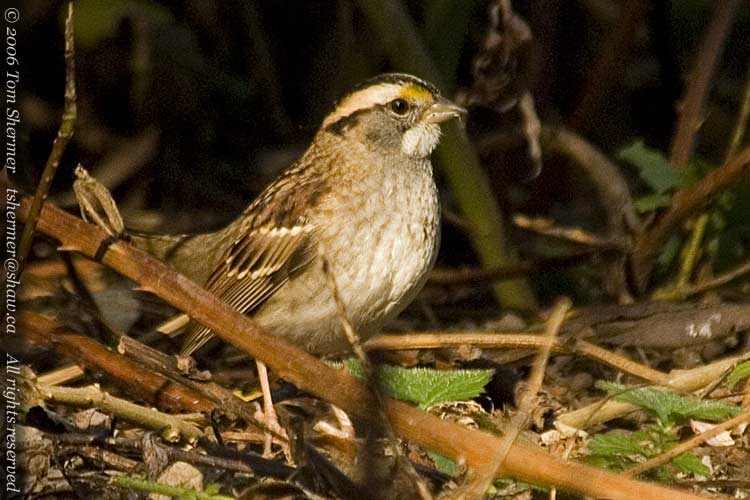 |
| |
|
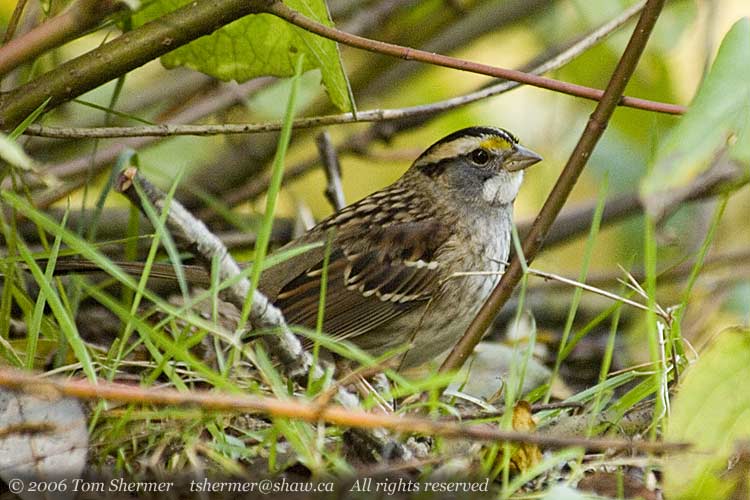 |
|
A handsome fellow,
that White-throated.
A little while after,
a birder by the name of Graham came by, and we waited for the
bird to reappear. Unfortunately, it didn't, at least while Graham
was there. I waited after he had left, and the time passed slowly.
About 40 minutes after I first lost my target, I again spotted
a white-throated bird in the underbrush.
|
|
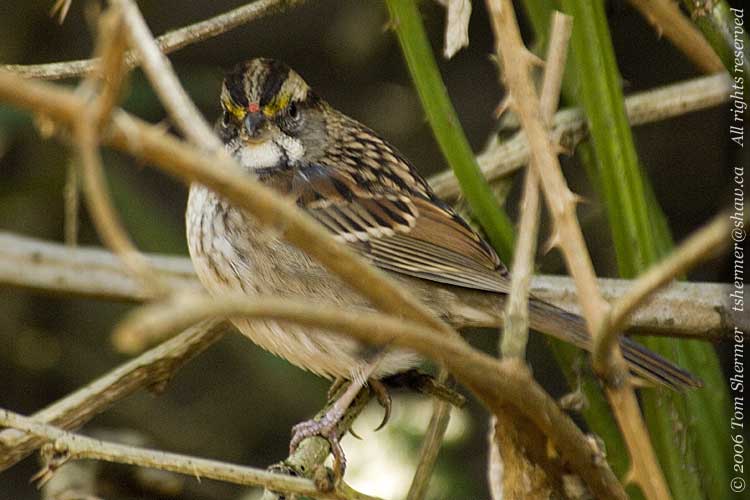 |
|
This fellow looked
a bit different, though. First, there is the little red bit right
above his bill, but that could be just a piece of a berry that
he had stuck his bill into. The more troubling thing about this
bird's appearance is that the stripe above his eye (called the
supercilium) looked tan rather than white.
It turns out that there
are two types of White-throated Sparrows, known informally as
the tan morph and the white morph. One of the obvious
differences between the morphs (and the reason for their names)
is the color of their superciliums. This started me thinking that
I had found not one, but two White-throated Sparrows.
I didn't think it was
likely that I, a relatively wet-behind-the-ears birder, would
find an second uncommon bird where one had been reported; it was
more likely that I just wasn't that familiar with the different
appearances that one bird can have under different lighting and
postural conditions.
I kept taking photos
of the bird, though, and it certainly appears that this bird has
a tan supercilium, as it is significantly darker than the white
on his throat.
|
|
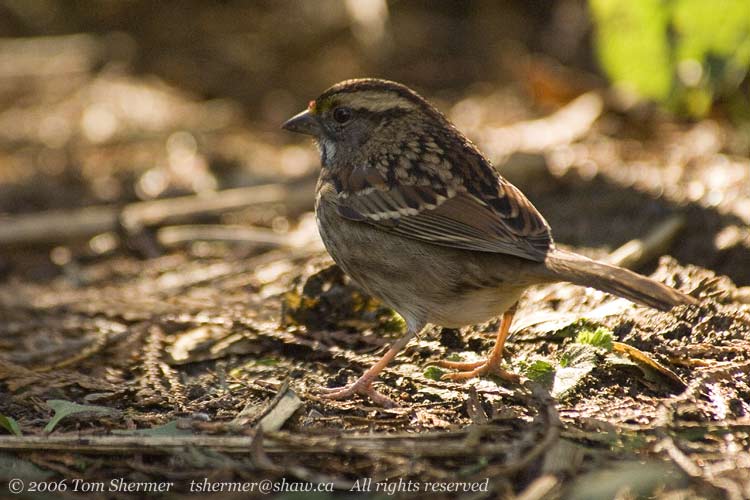 |
|
I again got photos
only for a few minutes before I lost the bird into the bushes
behind me. At that point, I packed up and headed home.
At home I thought that
my photos confirmed the one-bird theory, and I posted some of
them for the local birding community, along with commentary implying
that I thought I had just one bird. A fellow named Chris responded,
saying that the original report (one before Brian's, which I had
missed) said there were two birds, and that he himself (Chris)
had been there and seen a tan morph, so it looks like the photos
can be trusted and I did actually see two different white-throats,
of different morphs. That was pretty neat, to never have seen
either of them before and then to see them both at the same place.
Sittin' with the sparrows,
Tom
|
|
|